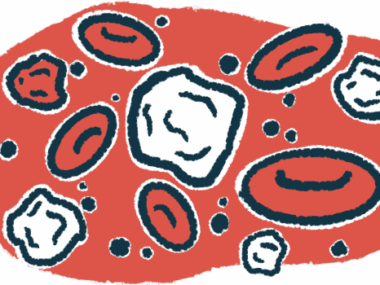New cellular roles for CLN3 protein identified in cell study
Loss of protein results in improper lysosome function, juvenile Batten disease
Written by |

Researchers have identified new cellular roles for the CLN3 protein, the loss of which is the cause of juvenile Batten disease, or CLN3 disease.
The loss of CLN3 in cell cultures leads to improper trafficking of enzymes needed for the function of lysosomes, the cellular compartments responsible for degrading proteins and other cellular waste. Reduced lysosome function drives impairments in pathways needed to create new lysosomes.
The researchers believe the findings explain how waste products that should be degraded by lysosomes accumulate to toxic levels in juvenile Batten disease. The study, “Loss of the batten disease protein CLN3 leads to mis-trafficking of M6PR and defective autophagic-lysosomal reformation,” was published in Nature Communications.
All forms of Batten disease are caused by genetic mutations that disrupt the function of various members of the CLN protein family. In juvenile Batten, mutations in the CLN3 gene cause a lack of the CLN3 protein.
This deficiency leads to the toxic buildup of waste products called lipofuscins inside cells, particularly in the brain, driving symptoms such as progressive motor and cognitive declines, vision loss, and seizures.
Still, the actual biological function of most CLN proteins, including CLN3, remains unclear. CLN3 has been linked to a number of different cellular processes, leading researchers here to seek to perform a series of cell culture experiments to learn more about its function in lysosomes.
How does CLN3 protein’s absence lead to juvenile Batten disease?
They found CLN3 is present in the Golgi apparatus, a cellular complex important for processing and sorting proteins for transport to their destination within the cell. It also interacts with a number of proteins involved in pathways needed for trafficking and sorting proteins bound for recycling or degradation in the lysosome.
One such protein is the cation independent-mannose 6-phosphate receptor (CI-M6PR), which helps sort enzymes needed for lysosome function. When CLN3 was depleted from cells, CI-M6PR was trafficked to the wrong areas in cells and degraded.
Accordingly, certain lysosomal enzymes were found to be improperly sorted when CLN3 was absent and their activities were reduced. Together, these deficits could lead to a “global impairment of lysosomal degradative capacity,” the scientists wrote.
The lack of CLN3 also led to the presence of large and clumped up lysosomes with a reduced ability to degrade cellular waste, especially in conditions where they were starved of necessary nutrients.
That suggested the disruption to autophagic lysosome reformation (ALR), a process wherein new lysosomes are formed under certain conditions. Particularly, ALR restores lysosome numbers after they’ve been depleted during conditions of starvation.
Cells without CLN3 almost completely lacked lysosomal tubules, small structures on lysosomes that bud off and elongate to create new lysosomes during ALR.
Restoring cellular CLN3 led to increases in tubulation and to more lysosomes that were reduced in size, suggesting their ability to degrade their contents was restored. Lysosomal enzyme levels were also restored.
The researchers recognized that for CLN3 to perform its functions related to tubule growth and lysosome reformation, CIM6PR and key ALR proteins were needed.
“CLN3 plays a crucial role in the sorting of CI-M6PR and links this process with ALR, thus explaining the global lysosomal dysfunction observed in Batten disease,” wrote the researchers, who noted a similar role in lysosome reformation for CLN7, whose dysfunction causes a form of late-infantile Batten disease.
Further research based on these data might clear the way for new therapeutic strategies, they said.






